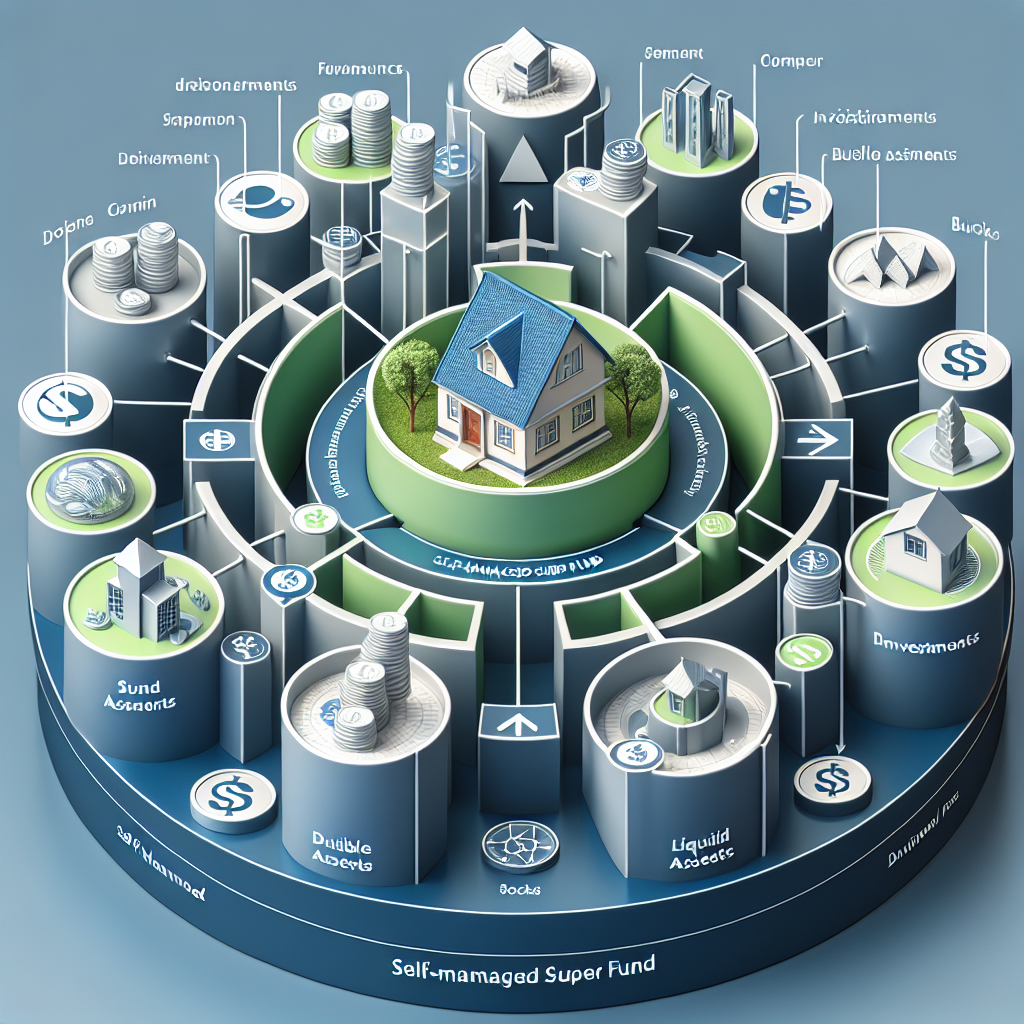Investing in property through a Self-Managed Super Fund (SMSF) has become increasingly popular among Australian investors seeking to build wealth for retirement. This strategy allows investors to leverage their superannuation savings to purchase real estate, potentially delivering both rental income and capital growth within a tax-advantaged environment. However, the journey from considering property investment through SMSF to successful implementation is filled with critical steps that many first-time investors overlook.
Understanding the SMSF Property Investment Landscape
Navigating the SMSF property investment landscape requires understanding both the opportunities and regulatory requirements that shape this investment avenue.
A Self-Managed Super Fund is exactly what its name suggests – a superannuation fund that you manage yourself rather than having a large institution manage it for you. The appeal of SMSFs lies in the control they offer members over investment decisions, including the ability to invest in direct property.
According to recent data, property investments constitute approximately 15% of total SMSF assets in Australia, highlighting their significance in wealth-building strategies. But why has property investment through SMSF gained such traction?
For many investors, the combination of Australia’s historically strong property market and the tax benefits available through superannuation creates a compelling investment case. As one financial advisor puts it, “Buying property with SMSF funds has enormous advantages and can certainly help to increase a member’s wealth in relation to their retirement.”
However, this path is governed by strict regulatory frameworks established by the Australian Taxation Office (ATO) and the Superannuation Industry (Supervision) Act (SIS Act). Understanding these regulations is the first step in avoiding costly mistakes.
The Tax Benefits and Control Advantages of SMSF Property Investment
Property investment through SMSF offers several significant advantages that make it an attractive option for many investors.
Tax Efficiency
The tax treatment of property investments within an SMSF can be considerably more favorable than investing personally. Consider these key benefits:
- Rental income is taxed at just 15% during the accumulation phase
- Capital gains receive a one-third discount if the property is held for more than 12 months, effectively reducing the tax rate to 10%
- Once your SMSF enters pension phase, both rental income and capital gains can potentially be completely tax-free
“Any rental income you receive into the fund during the pension stage is tax-free,” explains a tax specialist at Aries Financial. “This creates a powerful opportunity for investors to generate passive income streams that aren’t eroded by higher personal tax rates.”
Enhanced Control
Unlike investing through retail or industry super funds, an SMSF puts you in the driver’s seat regarding:
- Property selection: Choose specific properties that align with your investment strategy
- Tenant selection: Determine who rents your property
- Property management: Decide whether to self-manage or engage a property manager
- Maintenance decisions: Control when and how maintenance is performed
- Selling strategy: Determine the optimal time to sell based on your retirement plans
This level of control allows investors to tailor their property investment strategy to their specific retirement goals, a philosophy that aligns perfectly with Aries Financial’s commitment to empowering clients through expertise and guidance.
The 6 Essential Steps Most Investors Miss When Starting Out
The following six steps represent critical aspects of SMSF property investment that are frequently overlooked but essential for success.
### Step 1: Establishing a Compliant SMSF Structure
The foundation of successful property investment through SMSF begins with properly establishing your fund. Many first-time investors rush this critical step, potentially compromising their entire investment strategy.
A properly established SMSF requires:
- Creation of a trust deed that allows for property investment and borrowing
- Appointment of trustees (individual or corporate structure)
- Registration with the ATO to obtain a Tax File Number and Australian Business Number
- Election to be regulated by the ATO
- Establishment of a dedicated SMSF bank account
- Development of a comprehensive investment strategy
“The structure of your SMSF can change your fund’s legal requirements,” notes the ATO. Many investors miss the importance of choosing between individual trustees and a corporate trustee structure. While a corporate trustee involves higher setup costs, it often provides better asset protection and simpler succession planning.
Another critical oversight is failing to ensure the trust deed explicitly permits borrowing arrangements. At Aries Financial, we’ve seen numerous cases where inadequate trust deeds have delayed property acquisitions by months, sometimes causing investors to miss valuable opportunities.
Step 2: Crafting a Robust Investment Strategy
The ATO requires all SMSFs to have a documented investment strategy that considers:
- Risk and return of investments
- Diversification
- Liquidity needs
- Ability to pay benefits as members retire
- Insurance needs of members
“Your investment strategy is your plan for making, holding and realizing assets consistent with your investment objectives and retirement goals,” states the ATO.
A common mistake is creating a generic investment strategy that doesn’t specifically address property investment or adequately account for cash flow requirements associated with property ownership. Your strategy should clearly document why property investment aligns with your retirement objectives and how you’ll manage associated risks. For guidance, consider reviewing comprehensive SMSF investment strategies that can transform your retirement portfolio.
Step 3: Ensuring Sufficient Fund Liquidity
One of the most underestimated aspects of SMSF property investment is maintaining adequate liquidity. Your fund needs sufficient cash reserves to:
- Cover loan repayments during periods of vacancy
- Pay for property repairs and maintenance
- Meet ongoing SMSF compliance costs
- Pay member benefits when required
- Cover insurance premiums
Many first-time investors allocate too much of their super to property acquisition, leaving insufficient funds for these essential expenses. This can force distressed property sales or compliance breaches if the fund cannot meet its obligations.
At Aries Financial, we recommend maintaining a cash buffer of at least 12 months’ worth of loan repayments and estimated expenses to provide security against unexpected events.
Step 4: Understanding Limited Recourse Borrowing Arrangements (LRBAs)
If your SMSF doesn’t have sufficient funds to purchase property outright, you may consider a Limited Recourse Borrowing Arrangement (LRBA). This specialized lending structure allows your SMSF to borrow money to purchase a single acquirable asset, such as a property.
The “limited recourse” aspect is crucial – it means that if your SMSF defaults on the loan, the lender’s rights are limited to the specific asset purchased with the borrowed funds. This protects other assets in your SMSF from being seized.
“Because of the limited recourse nature of an LRBA, these arrangements typically attract an interest rate 2%–3% higher than what you would expect to see for a standard property loan,” explains a lending specialist at Aries Financial.
Key aspects of LRBAs that investors often overlook include:
- The need for a separate holding trust (bare trust) to hold the property while loan repayments are being made
- Restrictions on substantially improving the property during the loan period
- The requirement that borrowed funds can only be used to purchase a single acquirable asset
- Higher interest rates and stricter lending criteria compared to standard mortgages
- The potential impact on fund liquidity due to loan repayments
“An SMSF must amend its trust deed before engaging in limited recourse borrowing,” warns a legal specialist. This critical step is frequently missed, causing significant delays and additional costs.
Step 5: Conducting Due Diligence in the Property Purchase Process
When purchasing property through an SMSF, the transaction must be conducted at market value and on commercial terms. The ATO closely scrutinizes SMSF property purchases to ensure they comply with the sole purpose test – that is, the property must be purchased solely to provide retirement benefits to fund members.
Common oversights in the purchase process include:
- Failing to ensure the property is not acquired from a related party (with limited exceptions)
- Not documenting that the purchase price reflects true market value
- Overlooking the prohibition on living in or renting the property to related parties (with commercial property exceptions)
- Neglecting to establish that the property aligns with the fund’s investment strategy
- Not ensuring the correct entity (the holding trustee) is listed on the purchase contract
“Your self-managed super fund (SMSF) must be the legal owner of all fund assets. Investments must be held separately from any personal or business assets,” emphasizes the ATO. This separation is fundamental to maintaining the tax advantages of superannuation.
Step 6: Navigating Ongoing Compliance and Management
Perhaps the most significantly underestimated aspect of SMSF property investment is the ongoing compliance and management requirements. Your responsibilities don’t end once the property is purchased – they’ve only just begun.
Key ongoing requirements include:
- Annual SMSF audits by an approved auditor
- Regular valuations of the property at market value
- Proper documentation of all rental income and expenses
- Maintenance of arm’s length relationships with tenants
- Adherence to the sole purpose test throughout the investment lifecycle
- Regular reviews of your investment strategy
“Property development can be a legitimate investment for SMSFs, and the Commissioner does not have any concern with SMSFs investing in property development,” notes the ATO. However, any development activities must comply with superannuation law and be conducted in accordance with the fund’s investment strategy.
Understanding SMSF Property Investment Restrictions
While property investment through SMSF offers numerous benefits, it comes with important restrictions that investors must understand:
No Personal Use: Fund members and related parties cannot live in or vacation in a residential property owned by their SMSF. This restriction extends to relatives, partners, and business associates.
No Substantial Improvements Using Borrowed Funds: If purchased using an LRBA, the property cannot be substantially improved using borrowed money. Repairs and maintenance are permitted, but significant renovations must be funded from other SMSF resources.
Commercial Property Considerations: While you cannot rent a residential property to related parties, different rules apply to commercial property. An SMSF can purchase and lease a commercial property to a member’s business, provided the arrangement is at market rates and documented properly.
Long-term Planning Implications: SMSF property investments should align with long-term retirement planning. The illiquid nature of property means careful consideration must be given to how and when the property might be sold or transferred as members approach retirement.
Final Considerations for Successful SMSF Property Investment
A successful SMSF property investment strategy combines careful planning, regulatory compliance, and long-term thinking to maximize retirement benefits.
Investing in property through your SMSF can be a powerful strategy for building retirement wealth when executed correctly. However, it requires careful planning, strict compliance with regulations, and ongoing management.
At Aries Financial, we believe in empowering investors with the knowledge and support needed to navigate the complexities of SMSF property investment. Our commitment to integrity, expertise, and client empowerment drives us to provide tailored SMSF lending solutions that align with your retirement goals.
Before embarking on your SMSF property investment journey, consider these final recommendations:
- Engage qualified professionals, including financial advisors, accountants, and SMSF specialists
- Regularly review your investment strategy to ensure it continues to meet your retirement objectives
- Maintain meticulous records of all transactions, valuations, and compliance activities
- Consider the long-term implications of property investment on your retirement planning
- Stay informed about regulatory changes that might affect your SMSF property strategy
By avoiding the common oversights outlined in this article and approaching SMSF property investment with thorough planning and professional guidance, you can maximize the potential of this wealth-building strategy while minimizing risks and compliance issues.
Property investment through SMSF offers a pathway to greater control over your retirement future – and with the right approach, it can deliver both financial security and peace of mind for your retirement years.


